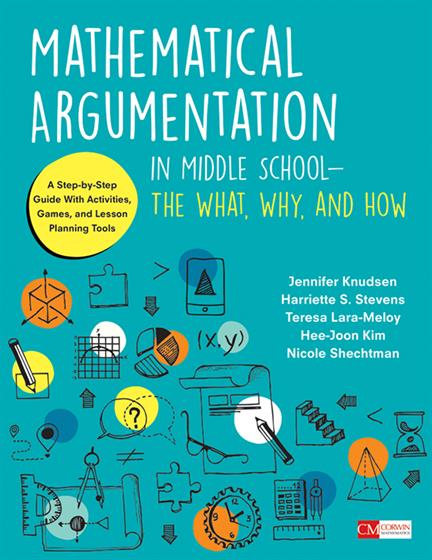Hands-on, Practical Guidance for Educators
From math,
literacy, equity, multilingual learners, and SEL, to assessment, school counseling,
and education leadership, our books are research-based and authored by experts
on topics most relevant to what educators are facing today.

Mathematical Argumentation in Middle School-The What, Why, and How
A Step-by-Step Guide With Activities, Games, and Lesson Planning Tools
This thoroughly researched guide helps you bring well-constructed mathematical discourse to life in your classroom today! Includes activities, vignettes, sample tasks, and online tools.
Product Details
- Grade Level: 5-8
- ISBN: 9781506376691
- Published By: Corwin
- Series: Corwin Mathematics Series
- Year: 2017
- Page Count: 192
- Publication date: September 21, 2017
Review Copies
Review copies may be requested by individuals planning to purchase 10 or more copies for a team or considering a book for adoption in a higher ed course. Request review copy





